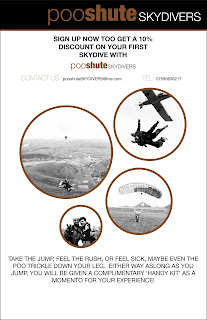Another Thursday afternoon means another Type lecture with Visually communications very own Graham! This week were learning about how too use column's in the layout of our work, and how point size, weight, type etc can be used too full advantage even in the smallest of spaces. Below are all my column set-ups and layouts, going from one grid (full page) too a 5 column layout. All the image below are screen shots from InDesign @ A4 scale.

Above - A screen shot showing all 5 of my layouts. This screen show was on 'Normal', the following shots are on 'Preview' which means you do not see the guides or columns used.

Above - We start with the single Column layout. In this what was found in the class was because of the massive space too fill, the point size of the type could increase to around 10 - 12. The 'Leading' was also found too be (on average) 2 - 3 point sizes larger than the type itself. We were then told by Graham this would be a great rule to follow in general, eg: 9 point type - 12 point leading.

Above - Two column layout. I found this simple enough too adjust too, the hardest point for me was scale and layout of the image. After several attempts including placing the image central, bottom right etc ... I found top left was best suited as it directed the viewer too the text below immediately.

Above - Spacing was becoming a large issue now. Graham said that viewer of a piece could be 'scared off' from reading the text if there seems too be too much of it - and he was so rite! My first attempt at this saw the leading brought closer, the point size smaller and the image larger. After Graham explained how seeing white on the page makes the viewer read it, I decided too space out the paragraphs and align the text too the right ... and what a difference!

Above - Although you may see the text is only in 3 column's ... in reality it is in four. During the lesson when i came across the problem of a lack of words per line, point size too small etc i viewed the column's purely as guides and decided too 'brake the rules' by spreading my text across the two. This way it makes the text more legible and more aesthetically pleasing.

Above - Again appyling my rules from the layout above, the 5 column layout just saw the number of words per line become fewer and fewer. Too solve this I placed the image central and in one of the single columns to show the viewer the space I was working in. Once again I brought the paragraphs in-together but then indented them too separate it for the viewer.

Above - I decided too make a print screen of my final 5 column layout along with the guide lines so you could see the spacing we were asked too work within. If you look closely you can see the text has several lines coming through the direct centre. The right line is where the first grid ends, then the following line is where the next column begins. The space between the two = guttering.
What have I learnt this week - well read above ... a lot! Grahams lecture manage too get me focused and engaged and I never thought I would say this but, I love type!




.jpg)





































.jpg)











